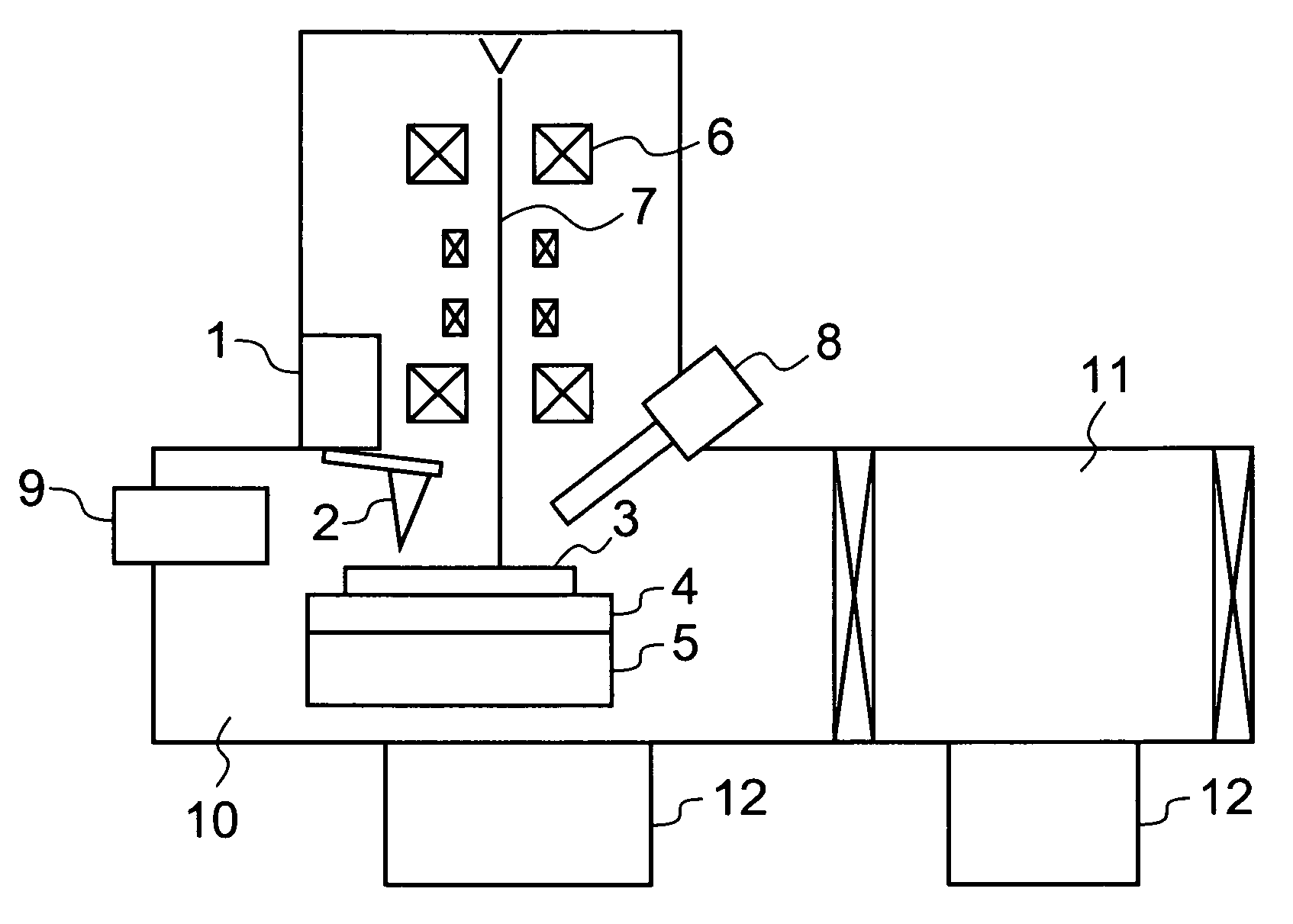Photomask defect correction method employing a combined device of a focused electron beam device and an atomic force microscope
a technology of atomic force microscope and electron beam, which is applied in the field of photomask defect correction method employing a combined device of focused electron beam device and atomic force microscope, can solve the problems of not knowing the position and shape of defects, difficult to search for defects, and finding the position of defects is more time-consuming than processing, so as to shorten the time of taking out and insertion of the mask. , the effect of shortening the tim
- Summary
- Abstract
- Description
- Claims
- Application Information
AI Technical Summary
Benefits of technology
Problems solved by technology
Method used
Image
Examples
Embodiment Construction
[0025]The following is a description of an embodiment of the present invention.
[0026]FIG. 1 shows a combined device of a focused electron beam device and AFM used in the present invention. A photomask 3 for which a defect has been found using a defect scanning device is introduced into a preliminary chamber or pre-chamber 11 of a device combining an electro-optical system 6 and an atomic force microscope (AFM) head 1 within a container having a vacuum evacuation system 12, and preliminary evacuation is carried out. When a vacuum is created in the preliminary chamber 11, the photomask 3 is moved into a work chamber 10 and placed on a rotating stage 4 supported on an XY stage 5. In the combined device, the work chamber 10 is common to and shared by the focused electron beam device and the AFM. An alignment mark of the mask is then observed at a high-magnification by detecting secondary electrons generated from the sample owing to irradiation of the focused electron beam 7 with the sec...
PUM
| Property | Measurement | Unit |
|---|---|---|
| atomic force microscope | aaaaa | aaaaa |
| defect size | aaaaa | aaaaa |
| angle | aaaaa | aaaaa |
Abstract
Description
Claims
Application Information
 Login to View More
Login to View More - R&D
- Intellectual Property
- Life Sciences
- Materials
- Tech Scout
- Unparalleled Data Quality
- Higher Quality Content
- 60% Fewer Hallucinations
Browse by: Latest US Patents, China's latest patents, Technical Efficacy Thesaurus, Application Domain, Technology Topic, Popular Technical Reports.
© 2025 PatSnap. All rights reserved.Legal|Privacy policy|Modern Slavery Act Transparency Statement|Sitemap|About US| Contact US: help@patsnap.com



